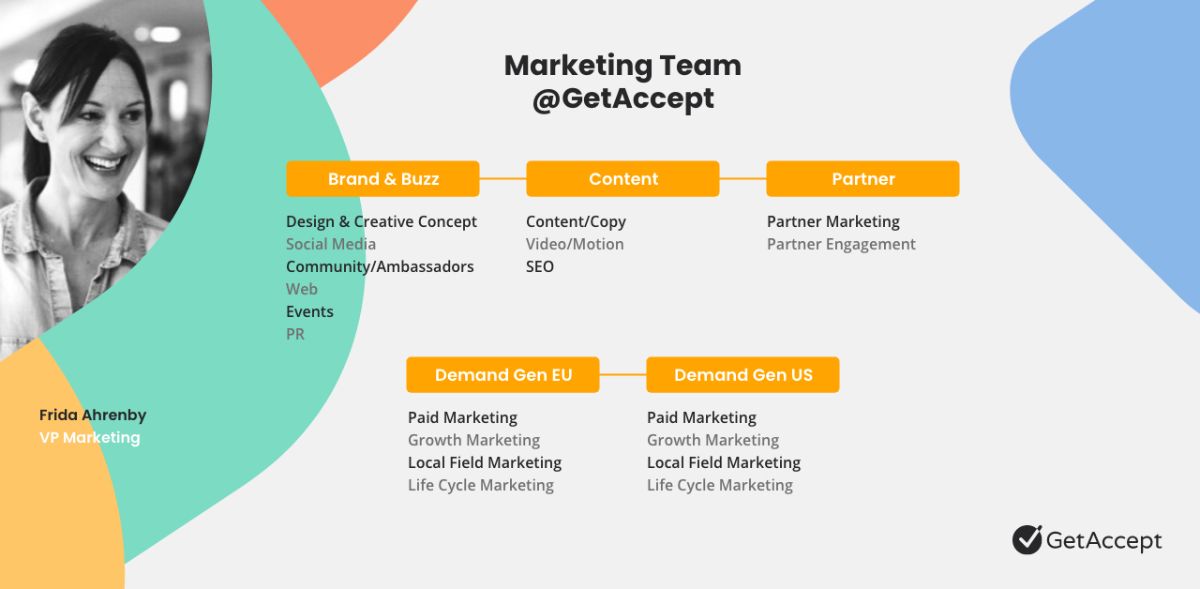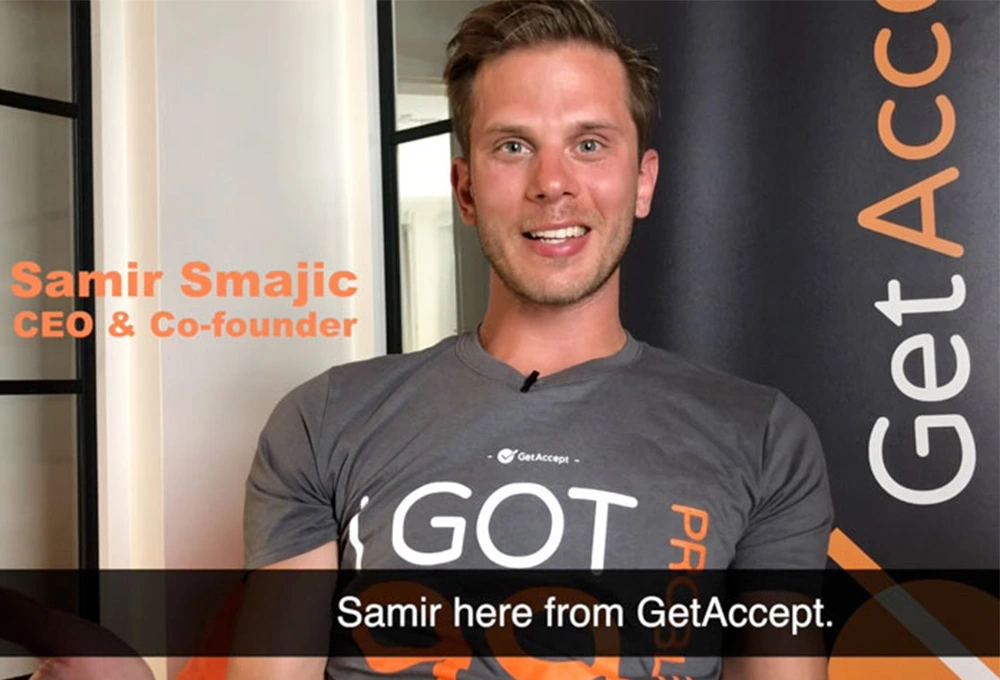When I joined the GetAccept team a little over a year ago, the marketing team consisted of 3 brilliant people, mainly focused on content, social media, and events. These three were doing an awesome job when it came to top-funnel activities. With their core strengths and competence, they made sure GetAccept had an organic presence in social media, did frequent blog posting, and participated in relevant offline events across our different markets. All in all, building our awareness and brand positioning with the best possible efforts.
However, being a SaaS company with an ambitious growth agenda and with an overall plan to shift from a sales-led strategy to marketing-led growth, we had to develop the marketing strategy to better support the overall revenue targets for the company. With the current team set-up, the marketing contributed ARR (annual recurring revenue) was at 15%. Our ambition for 2020 was to be at 50%, meaning we needed to implement a strategy and start executing activities that would drive a higher volume of qualitative leads to the sales team (the goal being 3X).
With that said, we needed to take action on the below to be able to reach those targets:
- Add new channels and demand-generating activities to the overall marketing plan
- Continue to build our brand positioning globally with relevant content
- Build a team with a growth mindset, start to track and measure success
Team set-up for building an inbound machinery
But if your company is running at full capacity, how do you build a marketing team with the right resources and competence to have your bigger issues covered at each given time period?
Based on our business goals and strategy for 2020, the most critical part was to add new channels to the marketing mix to make sure we would scale the inbound lead generation. Given the competence we already had in-house, being more focused on brand, buzz, and content, we quickly needed to add competence within performance marketing to increase our paid acquisition activities.
- Performance Marketing Specialist taking the lead on our paid marketing activities, driving demand and lead generation from channels such as search, social media, and display.
The next critical point was the website. All that new traffic that we directed to our website had to convert in an optimal way, meaning we had to make sure our value proposition and offering were clearly communicated. We also had to make sure that customer interests were represented on the website.
- Web Manager taking the responsibility for our Global Website, continuously optimizing the customer experience, and improving the overall conversion rate in order to drive our growth online.
What about brand identity? We didn't have much to work with a year ago. I’ve written about developing the New Brand Identity before, find it here. Given our ambition to grow globally and become a category leader, a unifying visual identity was becoming more and more important.
- Design Lead taking the lead on developing the GetAccept brand and creating a visual identity, but also creating an awesome design for all our campaign, content, and other marketing assets.
Being a company with a market presence both in the US and EU, we first and foremost run a global marketing operation. But since Europe consists of countries with local differences, we also have to take a more local approach to be relevant the whole way through. For every new market we enter, we start working with marketing activities from a central point. When we see traction, and when the efforts start to scale, it is usually time to recruit people to be responsible for local demand generation, working closely with local sales. Growing to become quite many people in the marketing team during the year, it has also become relevant to recruit regional Marketing Leaders to manage the demand generation teams.
- Local field marketing owns the marketing activity plan and demand generation for the local market. They develop a marketing plan aligned with local sales tactics and execute it in close collaboration with sales.
- Regional Marketing Leaders manage the team and have the overall responsibility of the demand generation and brand awareness activities for a bigger region, in our case EU and the US
Partners are key, and many of our most valuable customers have a CRM integration to our platform. Running Partner marketing activities and creating joint content build and maintain strong partner relationships. This has been something we wanted to focus more on during the year.
- Partner Managers are responsible for our main partner relationships and lead the strategic and tactical work to accelerate our growth with partnerships.
From 3 to 14. Here is a full team breakdown.

Growth mindset, tracking and measuring success. What can’t be measured can’t be improved
How to keep the whole team focused on growth? When you’re tracking the right things, growth becomes a much simpler task. We do it through company-wide OKRs, broken down at the team level. And we make sure to be customer-centric in our approach. For the Marketing team, this means tracking and following up on marketing initiatives that are creating value for the company’s overall growth. Our success metrics consider the full customer journey, from impressions and web traffic to customers won and ARR. Being able to properly attribute revenue across each of our marketing activities is key to knowing where to place our resources to fuel further growth. I will share more about our approach to OKRs and success metrics in an upcoming blog post.
Lessons learned
So, what have my team members and I learned during this fantastic, yet intensive, yet weird, year when it comes to team building and demand generation? These are our key learnings:
- Growing fast and creating alignment in the team is a challenge. Be patient and have realistic expectations on how quickly everybody will be at the same level.
- A great team is not built overnight. Setting a common working structure and implementing feedback and reflection sessions is a good start.
- Have a content over process approach - keep doing, and the process will evolve over time based on the challenges you stumble over and the reflections you make from that.
- Set a clear Area of Responsibility for each team member from the very beginning and try to have clear ownership of projects from the start to avoid misunderstandings and inefficiency.
- Think quality over quantity for better impact.
- Things take time. You can't do everything at once. Focus on the most important areas first.
.png)


